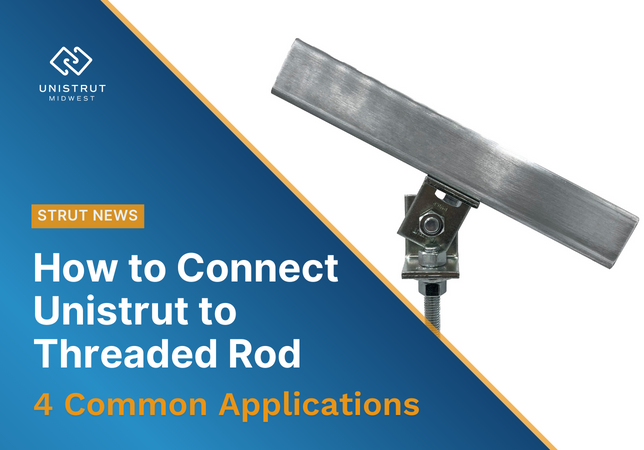How to Connect Unistrut to Threaded Rod
March 5, 2024
Whether used as drops from a ceiling grid, a way to connect to a bar joist, or support for cable trays and other utilities, threaded rod is a common component of a Unistrut installation. Connecting that threaded rod to Unistrut can seem tricky, but it’s rather straightforward. Here are four of the most common ways to connect Unistrut to threaded rod, depending on the application.
1. Unistrut and Threaded Rod Fixed Connection
The most basic way to connect Unistrut and threaded rod is the fixed connection. Hardware needed for this method are:
- Channel nut
- Flat plate fitting (like P1064 for 1/2” rod)
- Hex nut
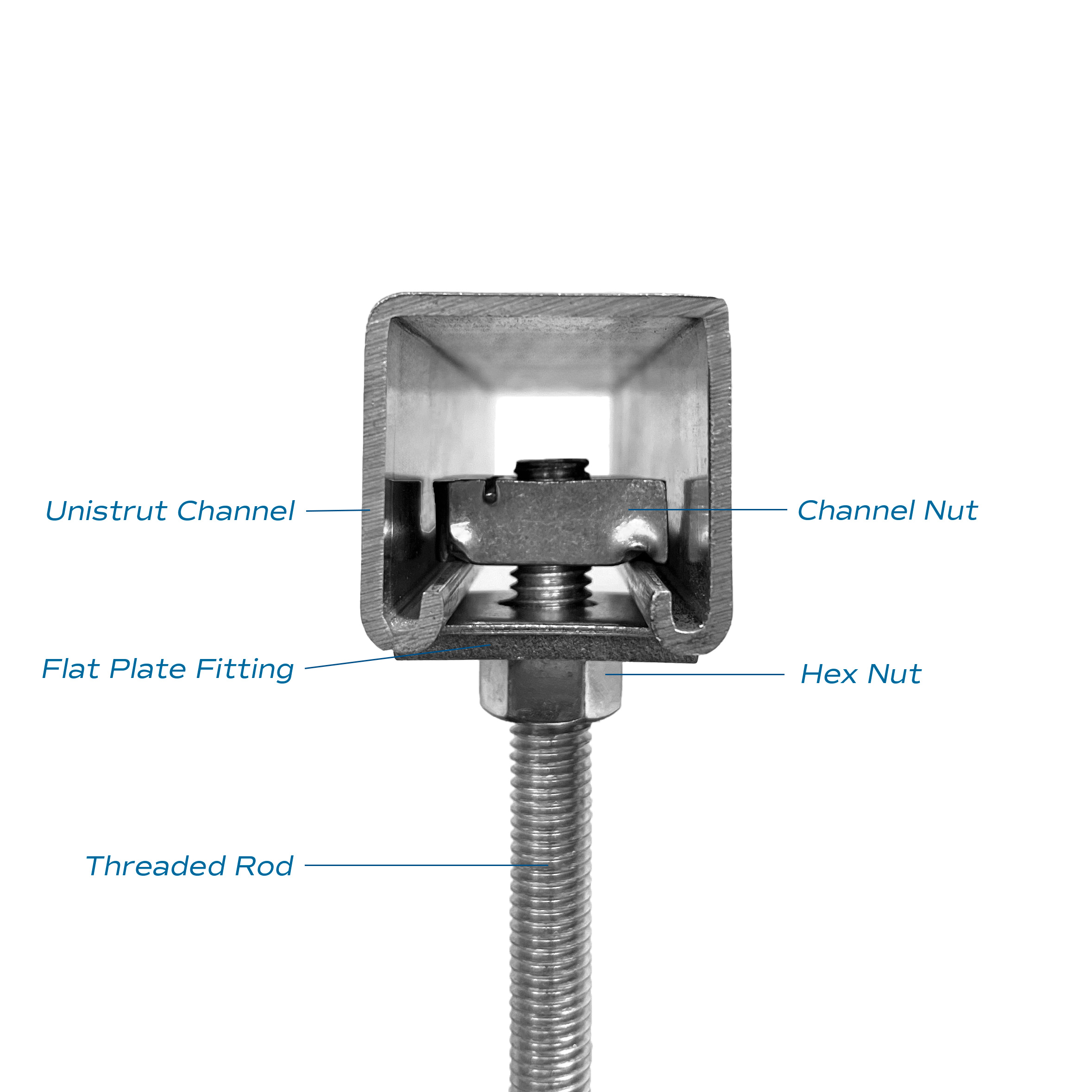
The channel nut is placed inside the Unistrut channel. The threaded rod enters the channel and is screwed into the channel nut through the bottom open face of the channel but does not touch or go through the top of the channel. Everything is then secured with the flat plate fitting and hex nut below the channel.
This method works with both single and double channel as well as solid and pierced sections of strut.
2. Unistrut and Threaded Rod Through Connection
The fixed connection method works in many applications, but it doesn’t allow for any adjustability after install. When you need to be able to make height adjustments, leverage the through connection. Hardware needed for this method is:
- Two flat plate fittings (like P1064 for 1/2” rod)
- Two hex nuts
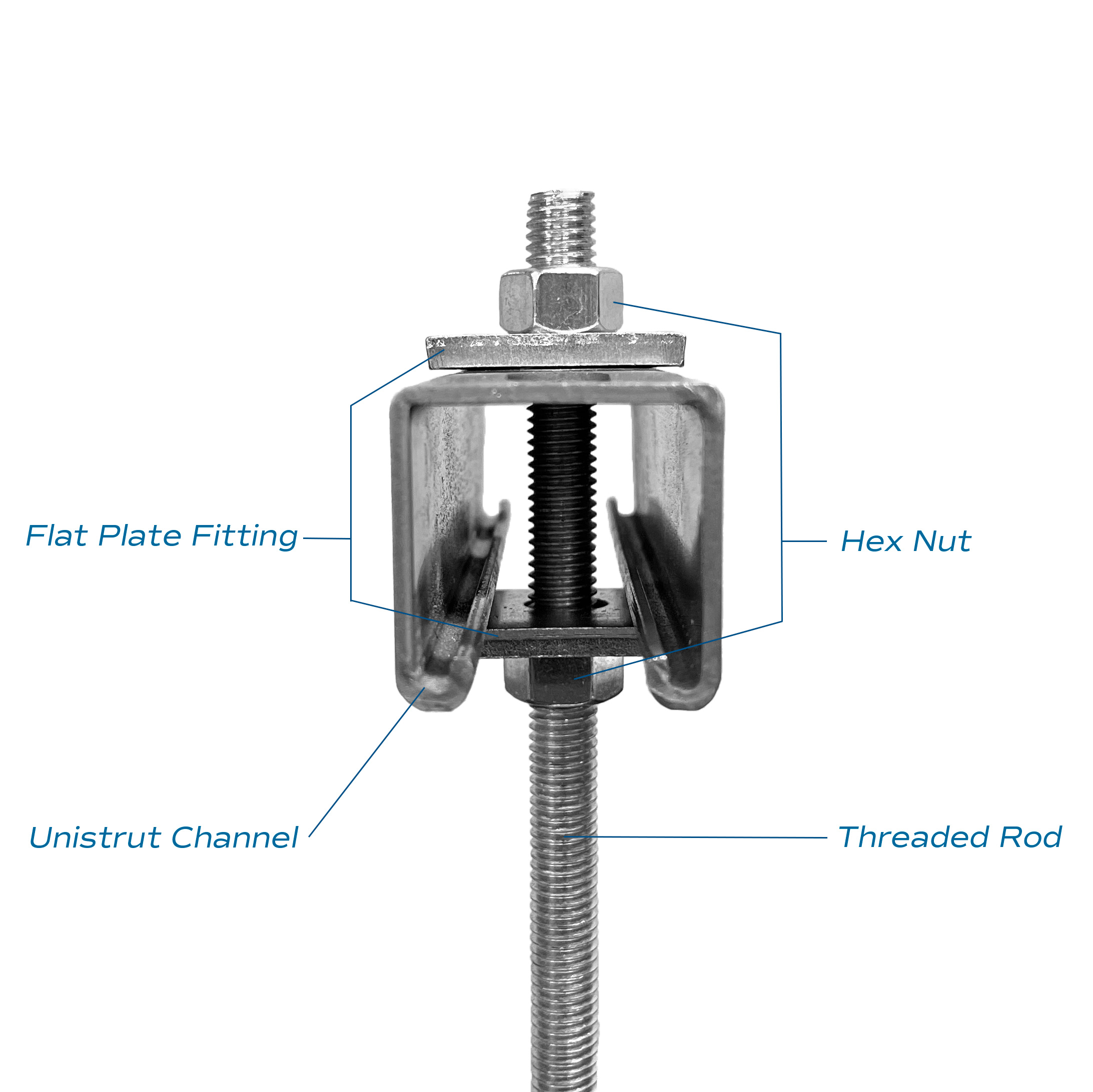
For this connection, the threaded rod will pass through the Unistrut channel entirely with hardware flanking each side of the channel. For the most solid connection, the threaded rod should be secured with a hex nut and flat plate fitting on either side of the channel. Because the rod exits the top of the channel it can be adjusted for height easily.
This method works best with slotted channel and works with single or back-to-back channel.
3. Unistrut and Threaded Rod Hanging Connection (Connecting from Beneath)
In some cases, you need more length adjustment than the through connection allows. In those cases, the hanging connection (or connecting from underneath) is a good option. Hardware needed for this method is:
- U-shaped fitting (like P1047) + relevant connection hardware
- Two flat washers
- Two hex nuts
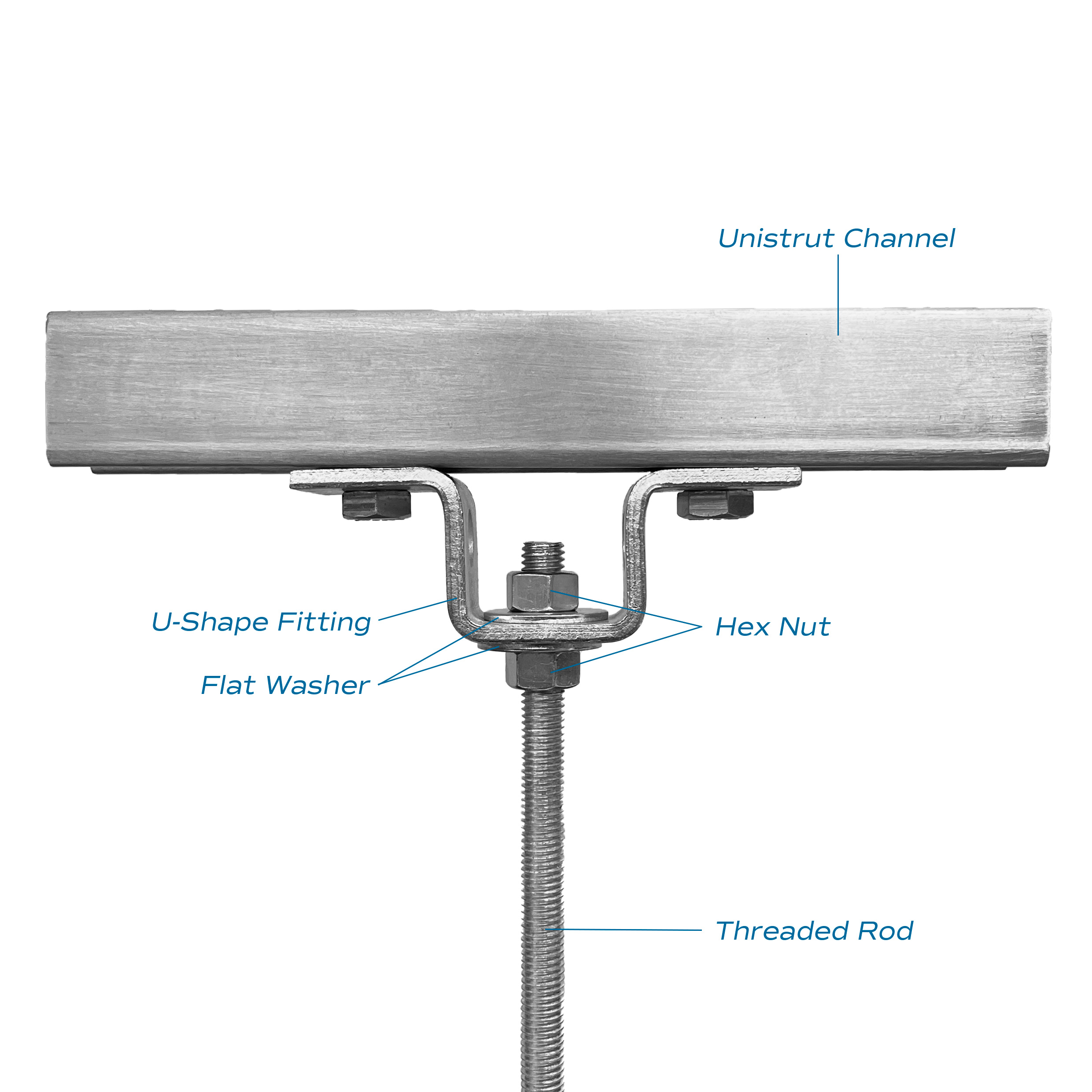
In this connection method, the threaded rod is not attached directly to the channel. Instead, a U bracket is attached to the underside of the channel and the threaded rod is then connected to the U bracket with the rod hanging below the channel.
Similar to the through connection method, the threaded rod passes through the U bracket and, for the most secure connection, a flat washer and hex nut flank each side of the U bracket where the rod goes through it. This allows for more length adjustment than a basic fixed connection.
4. Unistrut and Threaded Rod Angled Connection
Any of the above connection methods work well for flat and level surfaces, but often times your ceiling grid is attaching to an angled ceiling. In those instances, you’ll use the angled connection. Hardware needed for this connection is:
- Two 90° fittings (like P1068)
- Channel bolt
- Hex bolt
- Hex nuts
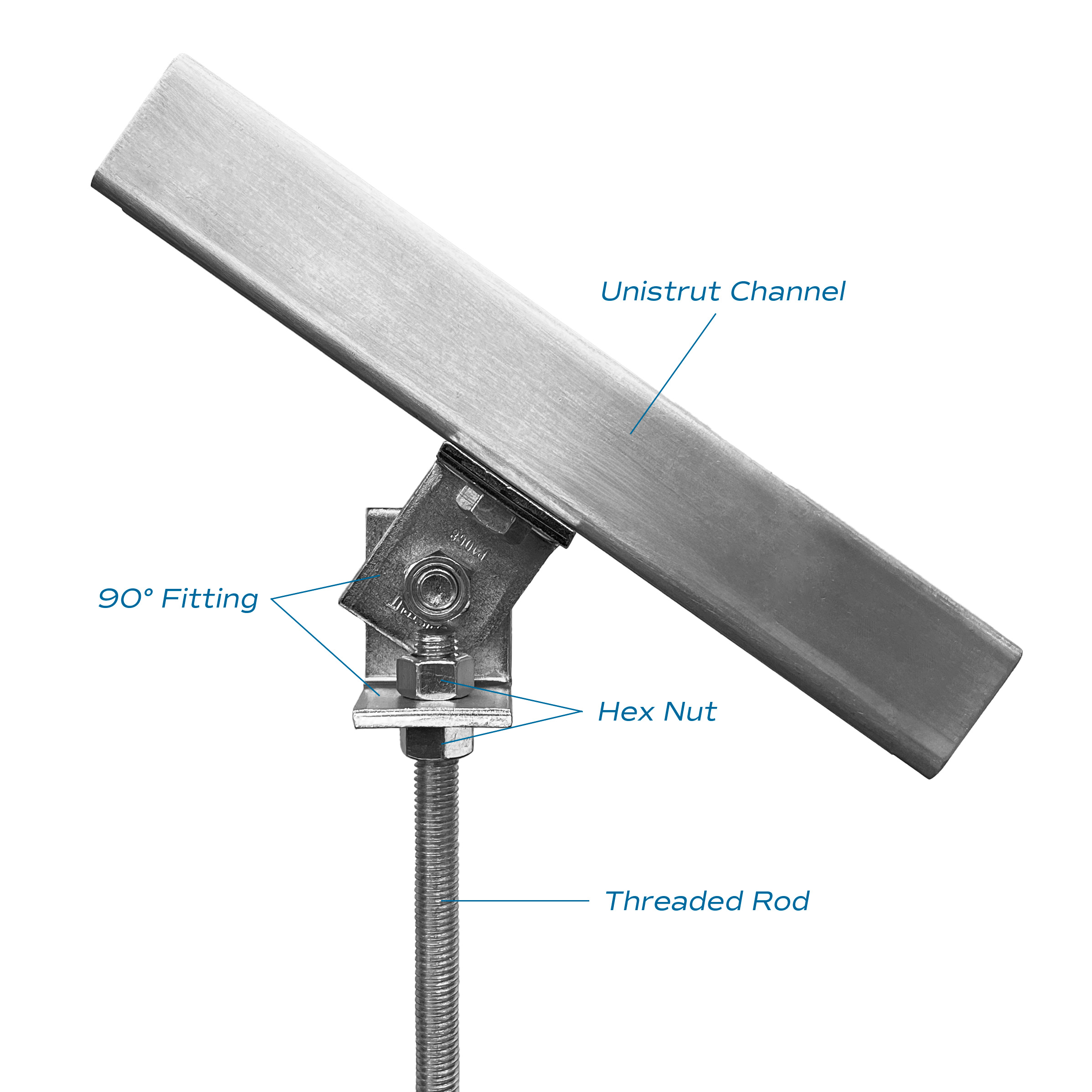
The angled connection is similar to the hanging connection in that the threaded rod doesn’t make contact with the Unistrut channel but hangs underneath it in a vertical position, no matter the angle of the Unistrut channel.
One of the angle brackets is connected to the underside of the Unistrut channel with a channel bolt and hex nuts. The second bracket is then connected to the first with a hex bolt and a hex nut. The threaded rod passes through the remaining hole of the second bracket and is held in place with a hex nut on either side of the hole.
This results in a secure connection that is highly adjustable, both in the rod height and the bracket angle.
Connecting Unistrut to Threaded Rod in Prefabrication
For applications like a ceiling grid, where you’ll have dozens or even hundreds of connections between threaded rod and Unistrut, it is often incredibly cost effective and efficient to prefabricate those repeated elements. A partner like Unistrut Midwest can cut your threaded rod to length and connect it to Unistrut channel in a prefabrication environment, then ship the assembled parts to your site for installation. Prefabricating those components will reduce the number of on-site man-hours and allow significant improvements to the overall installation time.
Are you interested in learning more about threaded rod and Unistrut connection prefabrication? Or does your application require a connection not covered here? Contact the Unistrut Midwest team and let’s problem solve.

